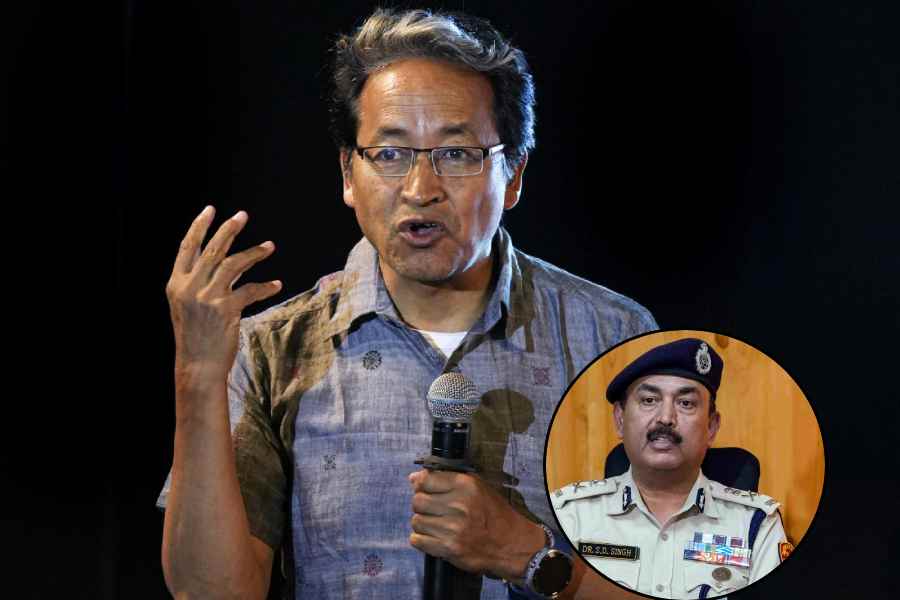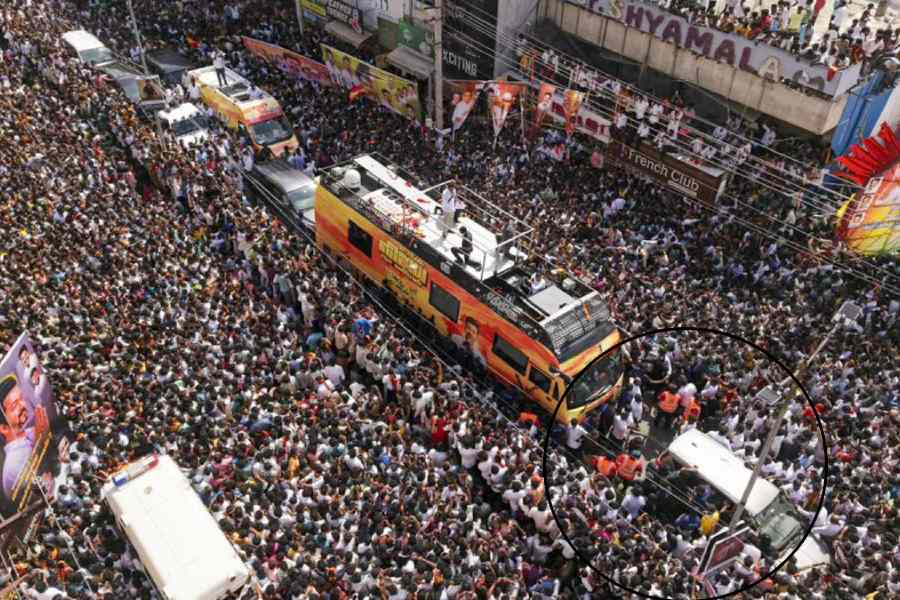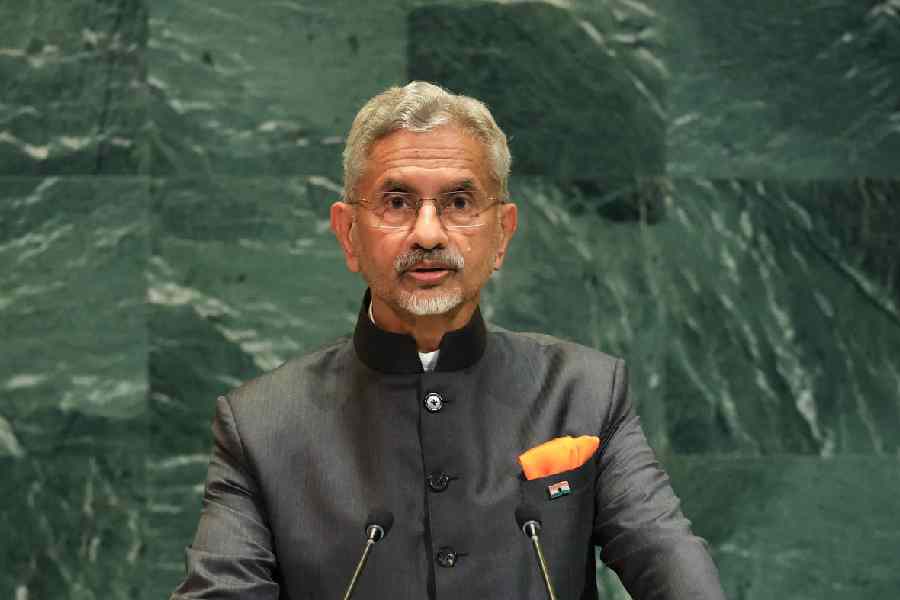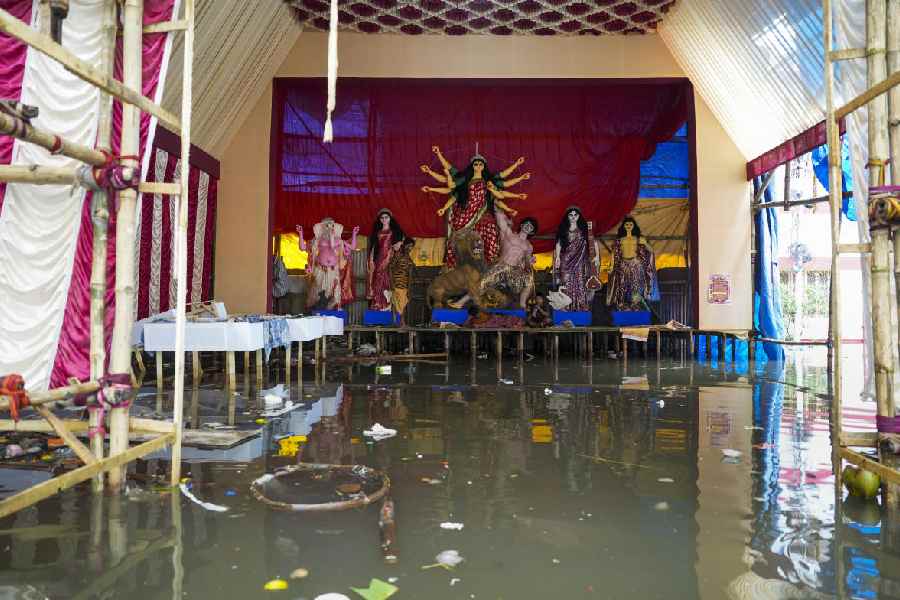 |
Some storms are believed to rage in tea cups. And on many occasions, they are known to brew dreams that go on to feed an entire generation.
One such dream came full circle recently when an emotional Usha R. Khanna released her book The Making of Samovar, in Delhi. A chronicle of her 43-year-old stint at the tiny Mumbai café, of which she is the proprietor, the book recounts her experiences at a place once frequented by many of the country’s leading artists and writers.
“It was like a second home to people like us, some penniless, others homeless,” laughs artist Anjolie Ela Menon. “It was where we grew up,” she says.
While Samovar may be written about, several cafés and restaurants in other metros have matched Samovar — cup to cup, pint to pint — in churning out some of the biggest names in India’s creative and intellectual circles. If Calcutta still boasts of the legendary Coffee House and Olypub, Delhi flaunts the no-frills Embassy in Connaught Place, while still holding on to its memories of the Coffee House which used to stand where Palika Bazaar is now situated. Bangalore, on its part, waxes eloquent about Koshy’s, haunted by the city’s own breed of artists, writers and lawyers.
Clearly, some eateries offer more than just food and drink. A few, as the book launch pointed out, are metaphors of a generation. But what, really, made these places the chosen melting pots of art and culture?
Ambience, for one. Often, the seedier the atmosphere, the more popular was the restaurant. At Olypub, for example, the rats were — and are — an integral part of the décor, while the knives supplied to carve the beefsteaks couldn’t cut through candyfloss.
“Such places give cash-strapped youth a sense of freedom, through their bohemian character, cheap food and easy accessibility,” says Delhi-based sociologist Patricia Uberoi. “The Sapru House canteen in Delhi is another place that was regularly visited by the capital’s journalists, academics and writers. The food was excruciating but no one ever complained,” she recalls.
 |
 |
| FRIENDLY BREW: (Top) Samovar in Mumbai and Calcutta’s Coffee House on College Street |
What also perhaps made India’s young identify with these institutions were their prime locations. In its heyday, Koshy’s attracted meritorious students who would walk down from the British Council library above. Samovar was the preferred meeting point for all those who visited the Jehangir Art Gallery, while Olypub, located on Calcutta’s Park Street, was the perfect place for scribes and admen to drop in for an in-betweener.
No place, however, matched Calcutta’s Coffee House, a stone’s throw from Presidency College, where radical students often met for heated discussions on weighty subjects. “A lot of political influence that made way for the Naxalite movement in Bengal germinated in the precincts of the Coffee House,” says sociologist Prashanta Ray.
Samovar, on the other hand, contributed strongly to the field of arts. “It can rightly be credited as the place where the progressive arts movement and the art film movement in India were born,” says Khanna’s journalist daughter Malavika Sangghvi. Chetna, another Mumbai eatery where politicians Jayaprakash Narayan and George Fernandes, painters S.H. Raza and M.F. Husain and author Mulk Raj Anand were regulars, also stakes its claim to fame in a similar vein. It was there, as owner Chetna Arya points out, that cartoonist R.K. Laxman had his first exhibition, and where theatre person Pearl Padamsee had regular readings of her plays.
One of the reasons the restaurants spawned dreams was the fact that business was never the bottomline there, as patrons were encouraged to dawdle for hours over their coffee. “Money was never a problem at the Coffee House,” says artist Shamshad Husain of the erstwhile Delhi restaurant he regularly visited, sometimes with his father M.F. Husain.
Samovar, on the other hand, often doubled as a post office for struggling artists who didn’t have an address to hand out. “Sometimes, it played the role of a bank, where many would deposit the meagre savings they had accumulated by selling a painting or two,” says Usha Khanna. “Samovar was not just a café, it was a home away from home, and evoked a sense of belonging.” So much so that when artist Jatin Das first tied the knot, he chose to do so in Samovar, says Khanna.
Scholar Ramachandra Guha holds Koshy’s in Bangalore dear for similar reasons. “My wife and I used to go there as college students,” he remembers. “The waiters have been around for years. They are friendly and nobody minds customers spending hours over a coffee,” he says.
Arjun Sajnani, owner of Sunny’s, a high-end Italian restaurant in Bangalore, offers his own take on why places such as Koshy’s and Samovar click with the creative kind. “They offer a congenial atmosphere. And since prices are reasonable, they attract people from non-money making fields such as the arts.”
But change, as they say, is inevitable. And in a consumerist world, several institutions known to have fuelled scholars and artistes are steadily turning over a new leaf. “The atmosphere at the Calcutta Coffee House has become less intellectual with the presence of a more frivolous crowd,” says author Shirshendu Mukhopadhyay.
Mumbai historian and author Sharada Dwivedi points out that Samovar, meanwhile, is no longer within the reach of the struggling breed. “Very few can afford Samovar today, which in the Sixties was cheap enough to feed impoverished artists,” says Dwivedi. “Parathas which cost Rs 3 then cost around Rs 70, now. It no longer serves the purpose it was meant to serve,” she says.
Add to that the fact that few in today’s high-octane society have the time to while away at a café. And when time permits, the young have a choice of a plethora of urbane and international restaurants that have mushroomed across the country. “How long [an old institution such as] Koshy’s remains an island of old-world charm is to be seen,” wonders Sajnani.
He may be right, for the Indian palate is changing. And there are not too many takers for a cup of tepid coffee, with a side dish of dreams and revolution.










